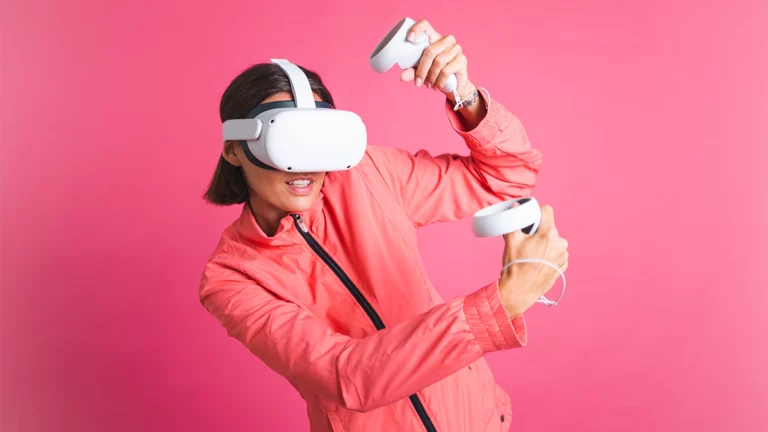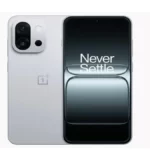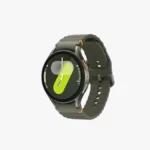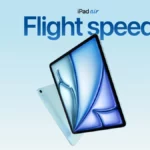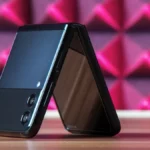There is speculation about a virtual reality headset that Apple may be developing, which is informally called “Apple VR.” Initially, rumors suggested that Apple VR was working on augmented reality glasses, nicknamed “Apple Glass.” Still, more recent reports have indicated that a high-end VR or mixed-reality headset may be the first to be released.
There have been some patent filings related to this project, but leaks about the device have only started to emerge recently, with several reports and analysts predicting the launch of an expensive headset with advanced technology in 2023. According to rumors, the headset may be named “Reality Pro,” but this would deviate from Apple’s usual naming conventions, as they typically reserve “Pro” for products that have a non-pro version and tend to use “Apple” or other branding monikers for new products.
Trademarks Registered For Apple VR
Trademarks that have been officially registered are associated with Apple VR and have been discovered in various countries, such as the US, UK, Canada, Australia, New Zealand, Costa Rica, and Uruguay. The trademarks are for the terms “Reality One,” “Reality Pro,” and “Reality Processor.”
The trademarks were filed by a company called Immersive Health Solutions LLC, which is thought to be owned by Apple VR based on various pieces of evidence. The company shared many of the same prominent law firms as Apple VR and was established in February as a shell corporation.
Apple VR vs Apple Glass
| Apple VR | Apple Glass |
| CEO Tim Cook believes augmented reality (AR) has more long-term potential than virtual reality (VR). | Apple’s rumored approach would be much more advanced than early AR beta products like Google Glass. |
| A premium “Apple VR” or “extended reality (XR)” headset could give developers and Apple’s designers a warmup run for “Apple Glass.” | Apple will ultimately aim for this with its AR glasses, though in a smaller form factor. |
| Apple VR technology is more mature and easier to produce. | AR overlays virtual objects, UIs, and characters on top of the user’s real-world environment. |
| VR cuts users off from their environment, fully immersing them in a virtual world. | Mixed reality (MR) can refer to a headset that incorporates elements of both. |
| These technologies use two lenses that combine two slightly different images to create a stereoscopic 3D illusion. | Today’s premium AR headsets sense your environment and place 3D graphical elements accordingly. |
| Like Microsoft HoloLens and Magic Leap 1, modern AR can create the illusion of video-game characters leaping across your room or a virtual table on your living room floor. |
Characteristics Of Apple VR
The characteristics of the “Apple VR” product are being discussed. While VR headsets are not an innovation and have been developed by companies like Sony, Samsung, and Oculus, Apple VR is predicted to improve upon existing technology and offer a headset that combines both augmented and virtual reality.
Design
- The “Apple VR” would resemble current VR headsets and be bulkier than AR glasses. It is projected to have a similar size to Facebook’s Oculus Quest 2 but with a curved front visor.
- Like Facebook’s headset, the “Apple VR” would be a standalone product with its own built-in battery, unlike PlayStation VR or Valve Index, which require connection to an external processing source.
- The device’s late-stage prototypes and concept images feature a curved visor with swappable headbands that attach to the face with mesh material. The early renders show a straightforward headset design with bands similar to the Apple Watch and AirPods Max.
- The VR headset would be completely enclosed, enabling users to have full virtual reality experiences while allowing for AR passthrough using cameras. This differs from “Apple Glass,” which has transparent lenses to show the real environment continually. According to reports, the headset would have a fabric exterior instead of Apple’s typical metal casing to minimize its weight. It may also come with swappable headbands, one of which could have a built-in battery.
- A report by Ming-Chi Kuo in December 2021 suggests that the headset would weigh less than a pound, and a second-generation model would be even lighter.
Processor and Display
- Apple VR has reportedly tested chips for its upcoming VR headset that are more powerful than the M1 processors in the latest Macs. The company may use a customized M1, M1 Pro, or M1 Max version in the headset, specifically designed for VR applications.
- The Apple VR headset is expected to have a higher-resolution display than existing VR products, using ultra-high-resolution 8K displays to produce an ultra-sharp image without the “screen door effect.” To power the 8K display, Apple VR reportedly incorporates foveated rendering technology, which tracks the user’s eyes and prioritizes graphical detail only in the section the user is looking at.
- Peripheral vision has downgraded quality, but foveated rendering allows for high-fidelity graphics to be presented more efficiently.
- Some reports suggest Apple VR may use micro OLED displays instead of standard OLED, with Sony potentially supplying OLED panels for the device.
Software
- All Apple VR products operate on a software system, including the upcoming VR headset. Clues to the name of this new operating system have been uncovered through code leaks and documentation. It may be named “rOS” or “xrOS,” following Apple’s naming convention for its other products, such as iOS for iPhone and tvOS for Apple TV.
- A trademark was filed by a company called “Realityo Systems LLC” for “realityOS” to be published in June 2022, around the same time as the WWDC keynote, but nothing came out of it. According to Mark Gurman, the internal project name for the operating system used in the Apple VR headset is “xrOS.” Still, the initial announcement of it, which was rumored to be in January 2023, did not happen.
- Ming-Chi Kuo suggested that the hardware manufacturing for the VR headset is on schedule for mass production in 2023, but the xrOS development may cause a delay in the hardware release.
Hand- Tracking and Cameras
- Apple’s prototype for a headset includes cameras that face outward and could potentially enable augmented reality (AR) features, as well as support hand tracking. At present, virtual reality (VR) headsets primarily use motion controls that track hand movement, similar to Wii remotes, with some headsets even tracking finger movement. Typically, when wearing a VR headset, users will see virtual hands that move in real-time along with the remotes.
- For interactions like FaceTime calls, an animated Memoji could be used as the headset will obscure the user’s face. Cameras would track the user’s facial expressions and map them to the Memoji. SharePlay is also expected to be a key feature, allowing users to watch movies and listen to music while interacting in a VR environment.
- In addition to hand and eye tracking, Apple VR is developing other control mechanisms, including a thimble-like device that could be worn on a user’s finger to control software. However, whether this accessory will be included or sold separately is still being determined.
- Multiple reports suggest that Apple VR will use LiDar technology in its mixed reality (MR) headset, which improves environmental mapping for AR experiences, placing virtual objects more accurately in the real world and potentially enhancing hand tracking.
- According to Ming-Chi Kuo, the Apple VR headset will feature 15 cameras for tracking and biometrics, with eight for passthrough images, six for biometrics, and one for environmental detection.
Cooling Effects
- Apple VR is intending to incorporate a fan in its upcoming headset, despite the fact that the company usually avoids using fans on its mobile devices. This is due to the fact that a proper cooling system is crucial in standalone VR, which necessitates the processing of two simultaneous graphical feeds for each lens’s view, each from a slightly different angle.
- The graphics are constantly shifting in response to the user’s head movement, making them graphically demanding and requiring high resolutions and a minimum of 60 frames per second.
- Additionally, the headset will include a built-in battery, which raises further concerns about overheating. Therefore, the incorporation of a fan is critical to ensure that the VR system maintains safe operating temperatures under these demanding circumstances.
Lenses:
- Apple VR is reportedly planning to offer customers the option to order personalized prescription lenses that can be inserted into their VR headset displays. However, the company will need to navigate regional government regulations if it wants to sell these lenses. It is still undecided how perceptions will be addressed during online or retail sales.
- Although filing for a patent doesn’t always mean the creation of a final product, Apple’s patent involves using fluid and pressure to modify the user’s prescription as needed. It’s unclear whether this technology will be utilized for VR, AR, or neither.
- According to rumors, the headset may include eye tracking and iris scanning capabilities for control and biometric authentication purposes. Apple Pay purchases or logins may be authorized using iris identification.
Release Date of Apple VR:
The Apple VR headset is expected to be priced higher than its competitors, potentially reaching $3,000, while also prioritizing user privacy and using higher-quality components. The company may adopt a commercial-focused pricing plan, such as leasing the hardware or paying subscriptions for software. While initially viewed as a niche product, Apple VR intends to target both consumers and commercial buyers.
The VR headset is expected to sell in low volume, with an estimated average of one sale per day per Apple Store. The device is seen as paving the way for Apple’s future AR glasses, with many of its underlying technologies and software contents potentially carrying over to the smaller, more consumer-friendly form factor.
Apple is rumored to have demonstrated a working prototype of the VR headset to its board in May 2022, with a possible release date in 2023, potentially announced at the Worldwide Developers Conference in June. Additionally, rumors of a second-generation headset with improved technologies and multiple price tiers have been circulating, with a projected release in early 2024.
Conclusion
The rumored Apple VR headset is expected to be a groundbreaking device that could revolutionize how we interact with technology. While details about the device remain sparse, leaks and rumors suggest that it will feature a high-resolution display, advanced eye-tracking technology, and a host of other innovative features. The headset is also expected to be tethered to a nearby device, allowing for seamless integration with other Apple products. While there’s no official word yet on when the headset will be released or how much it will cost, it’s clear that Apple VR is making a big push into the VR space, and that the device will be a significant player in the industry when it eventually arrives.



